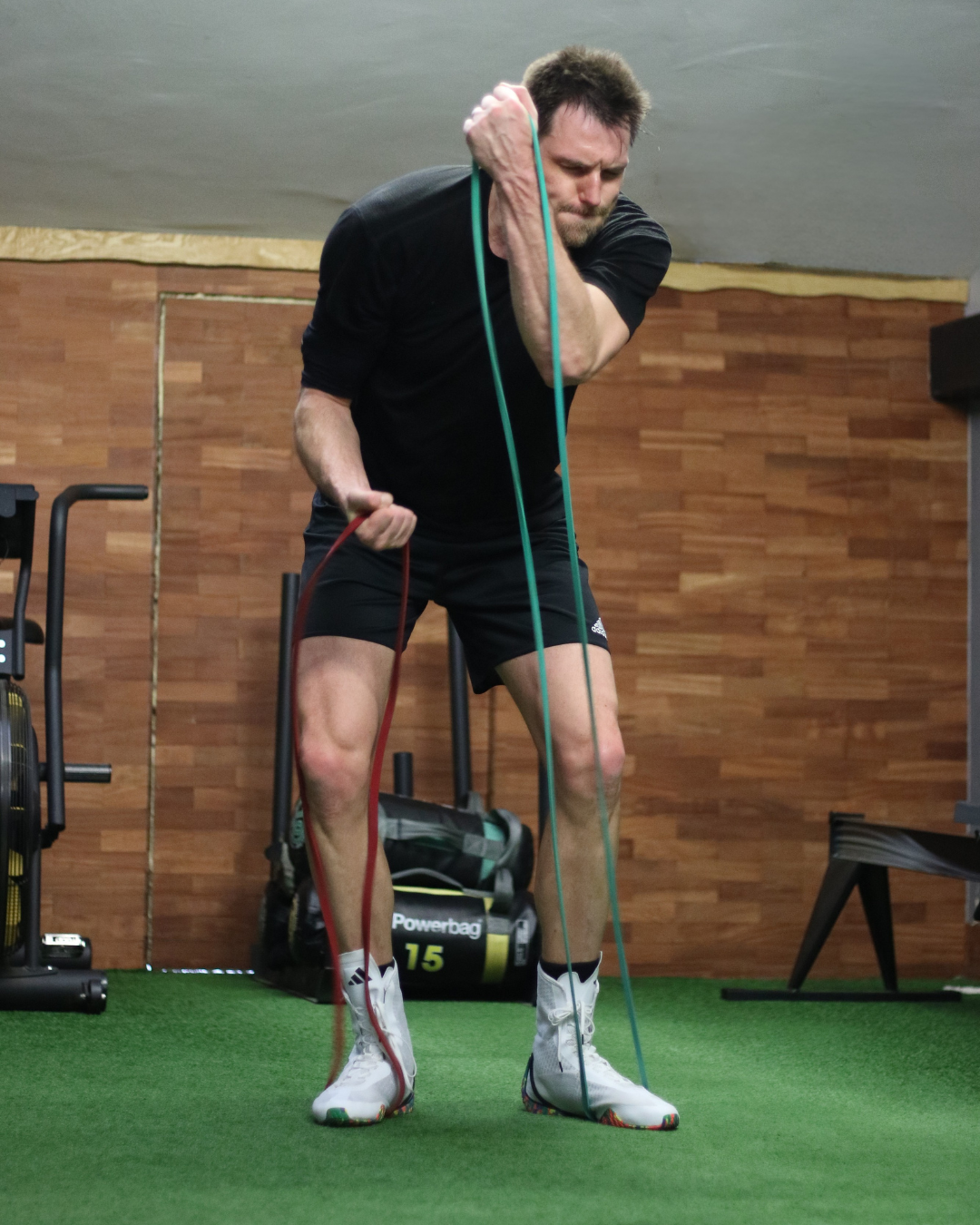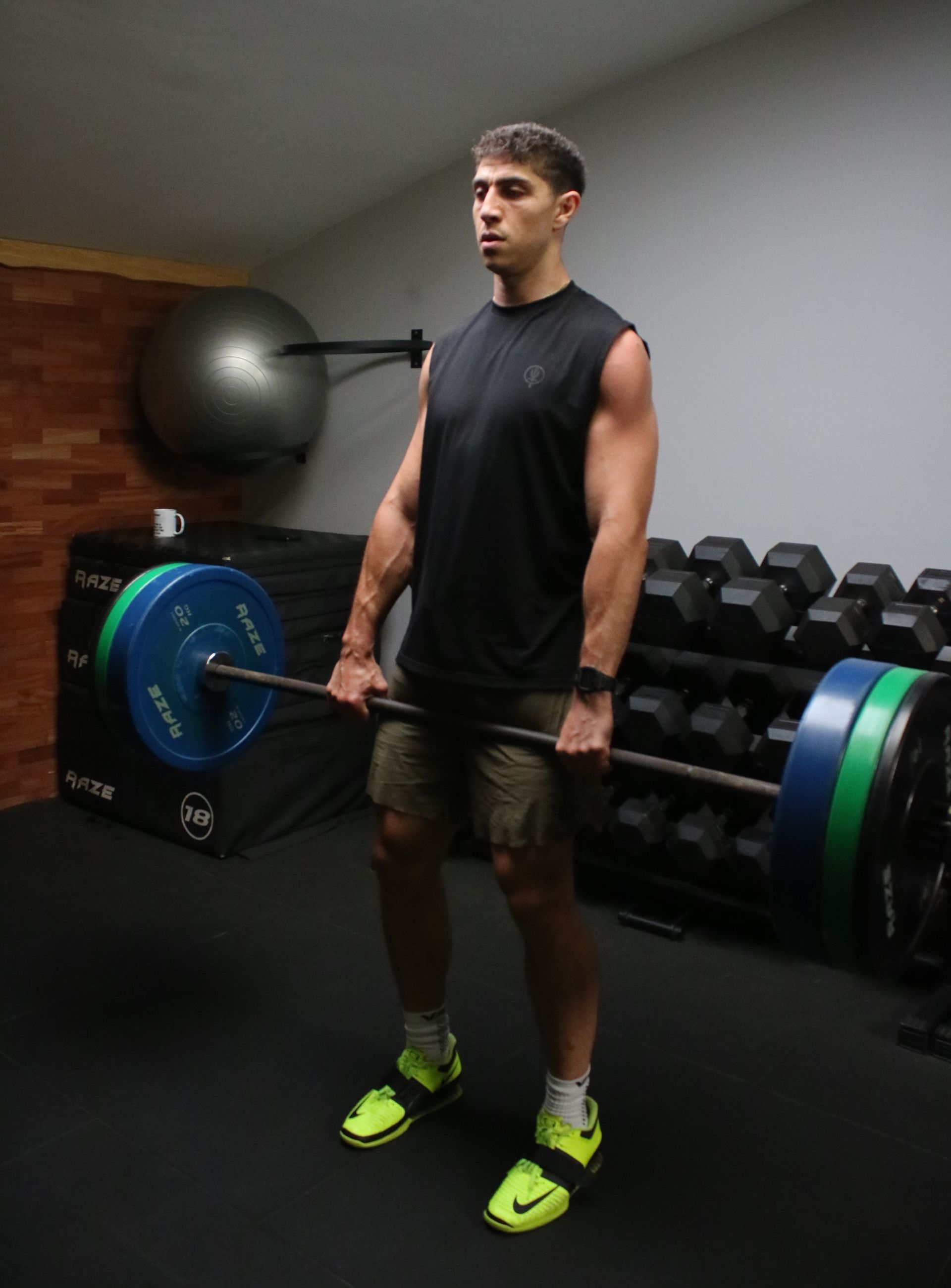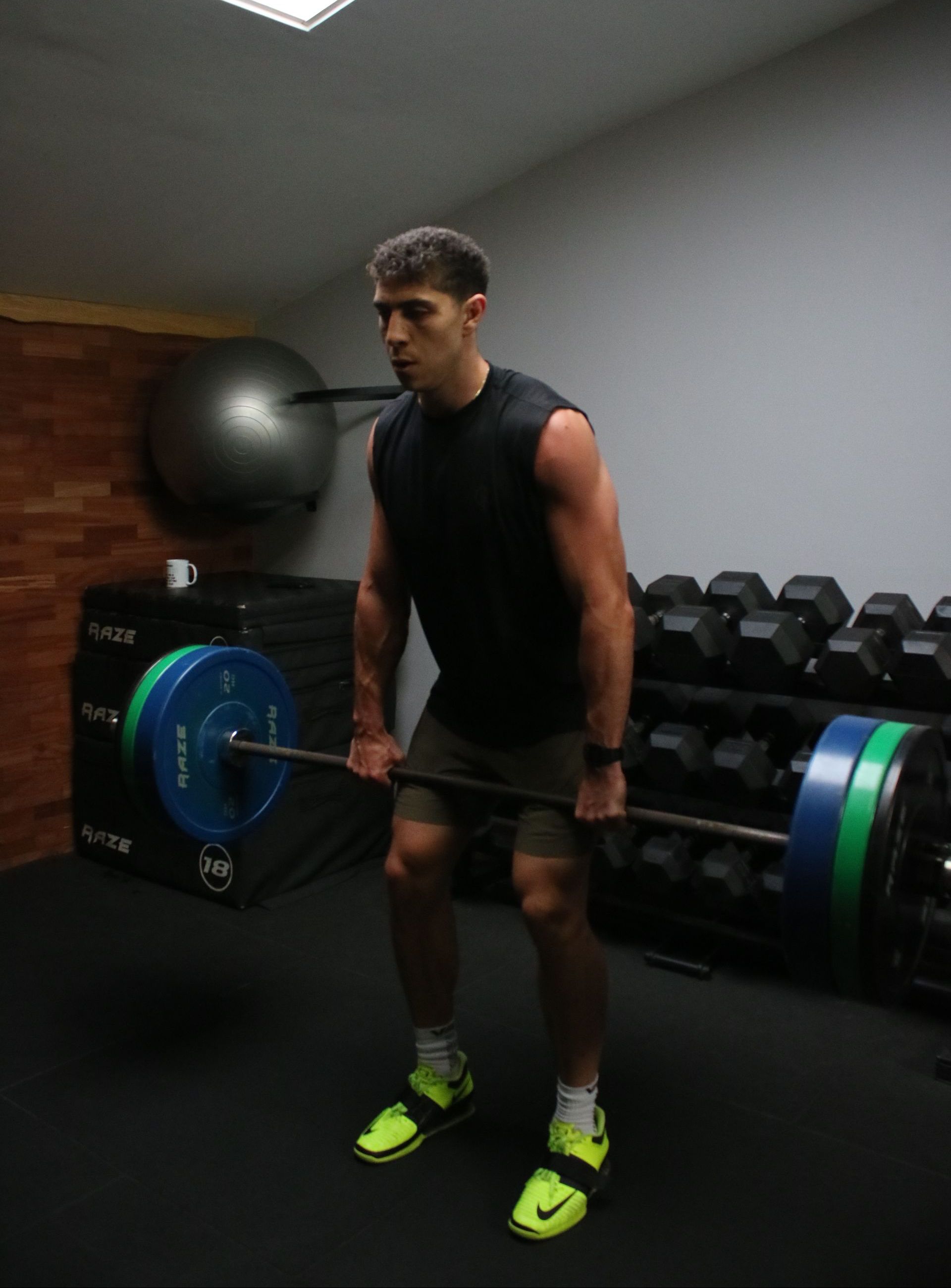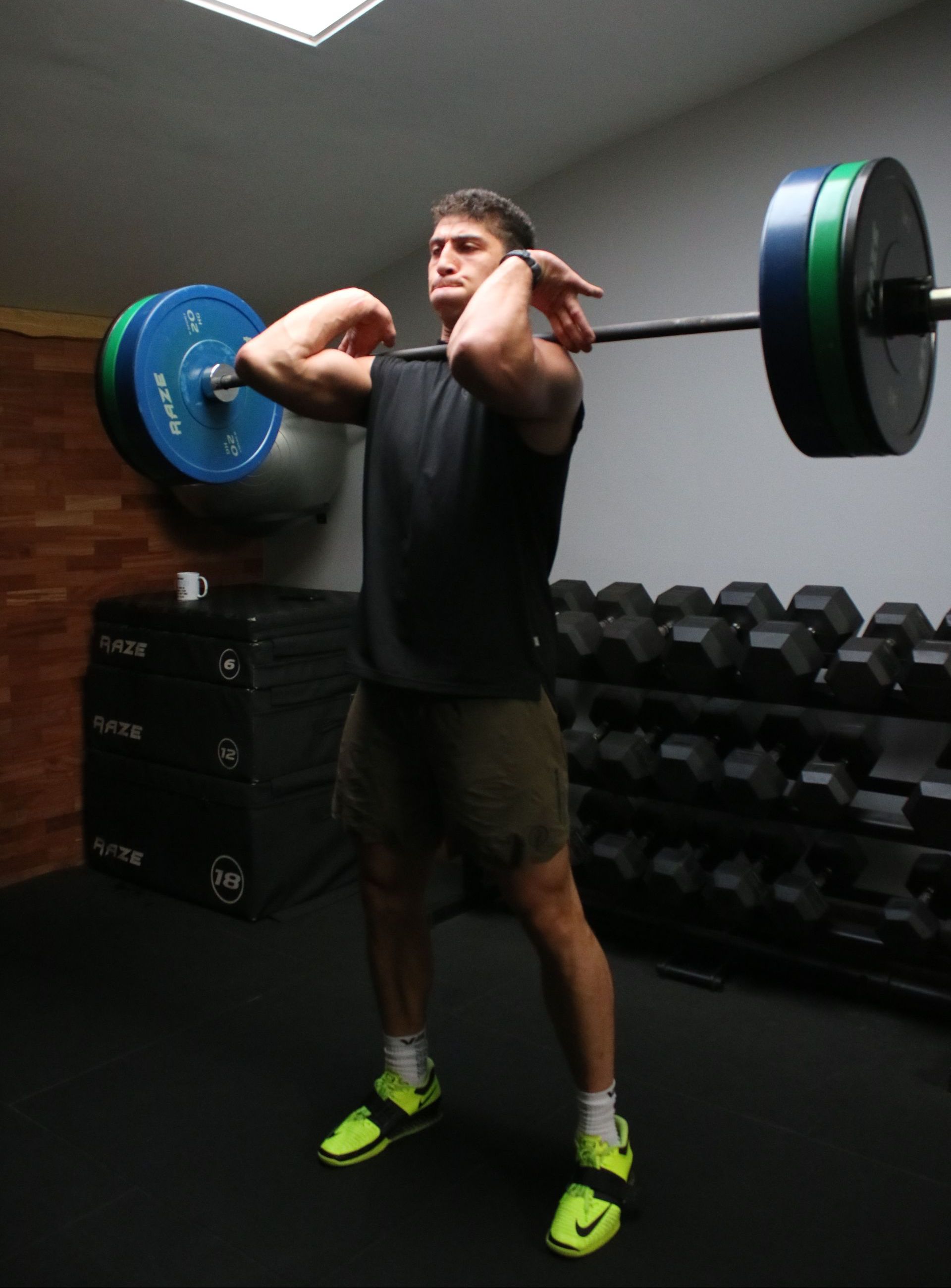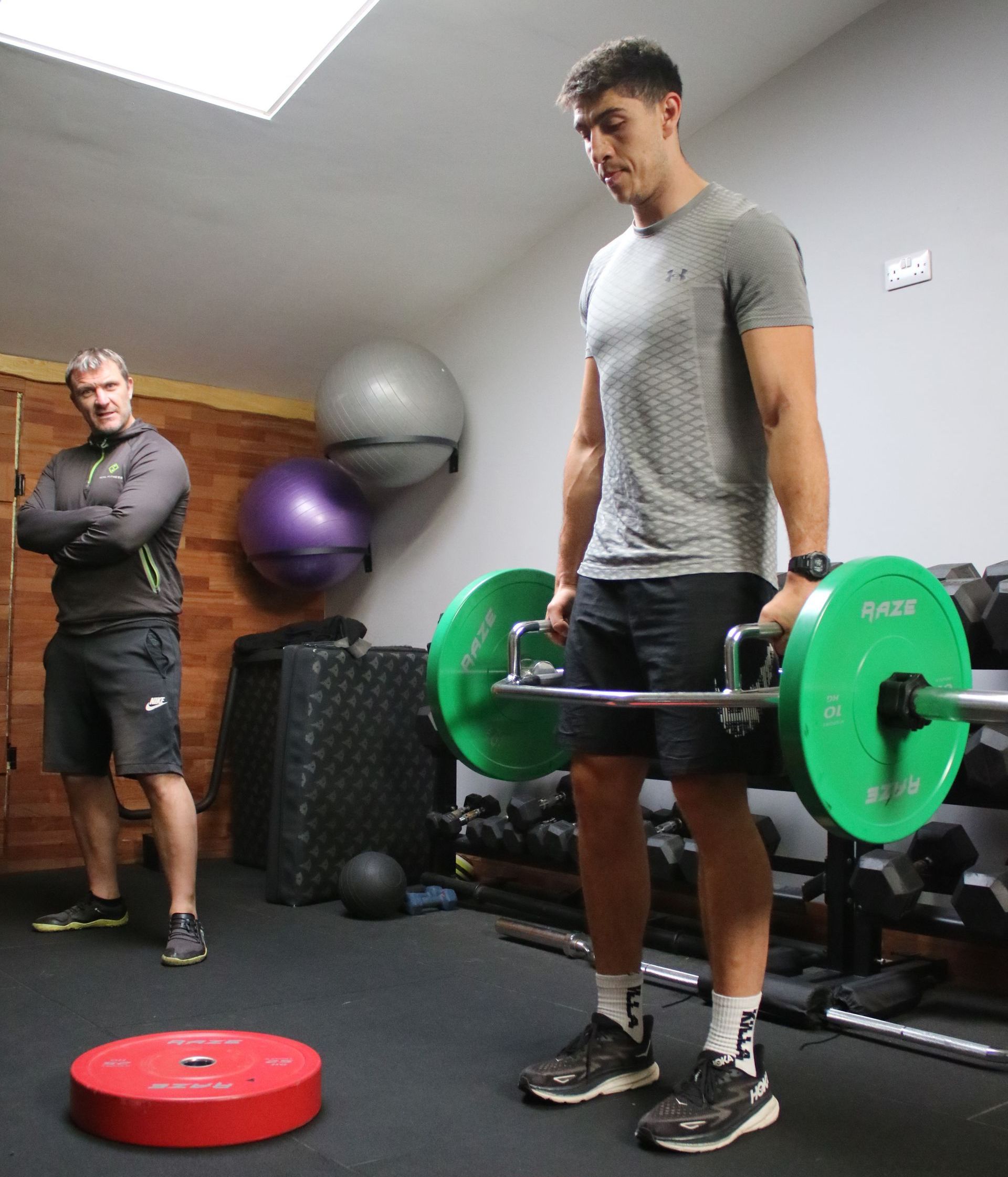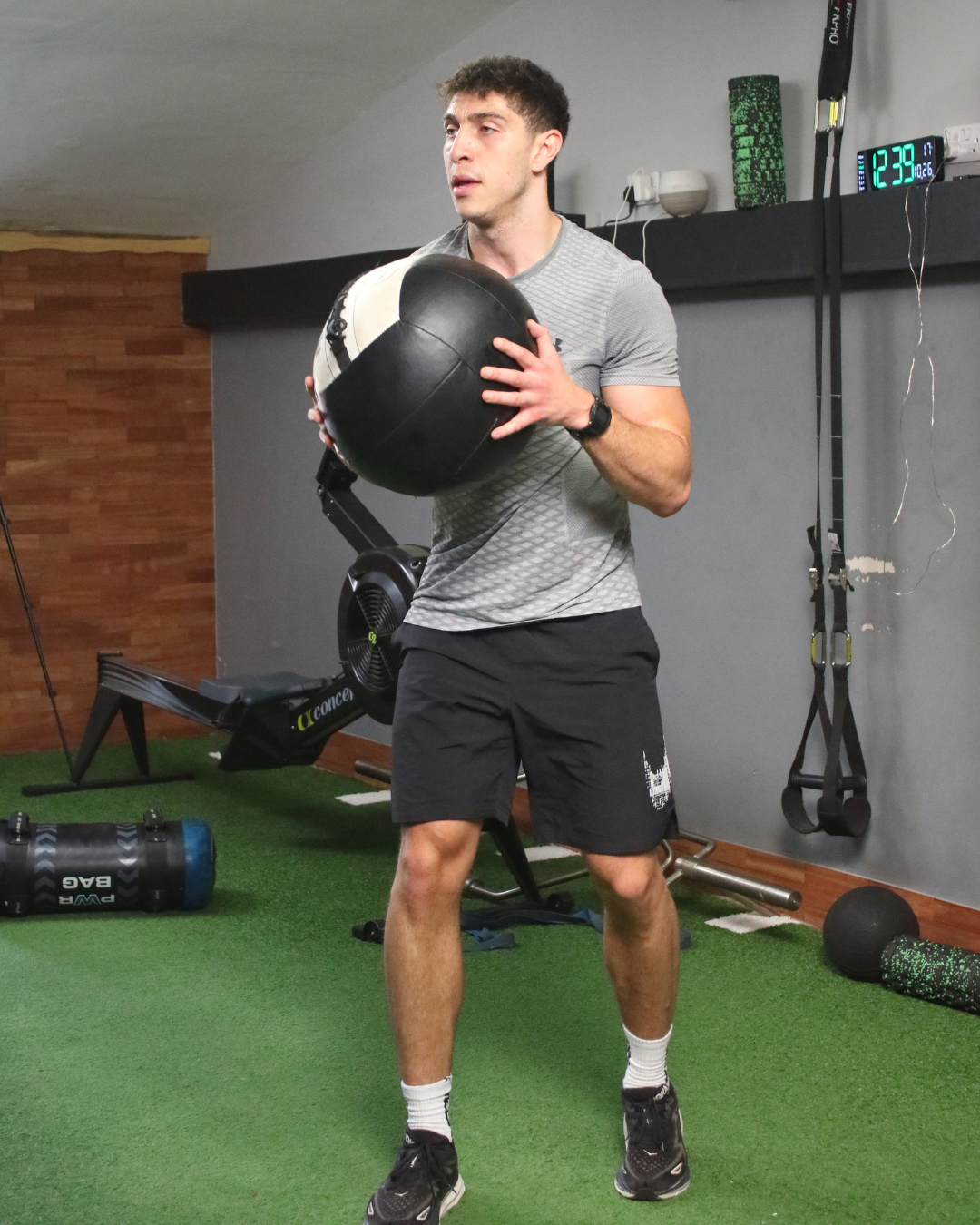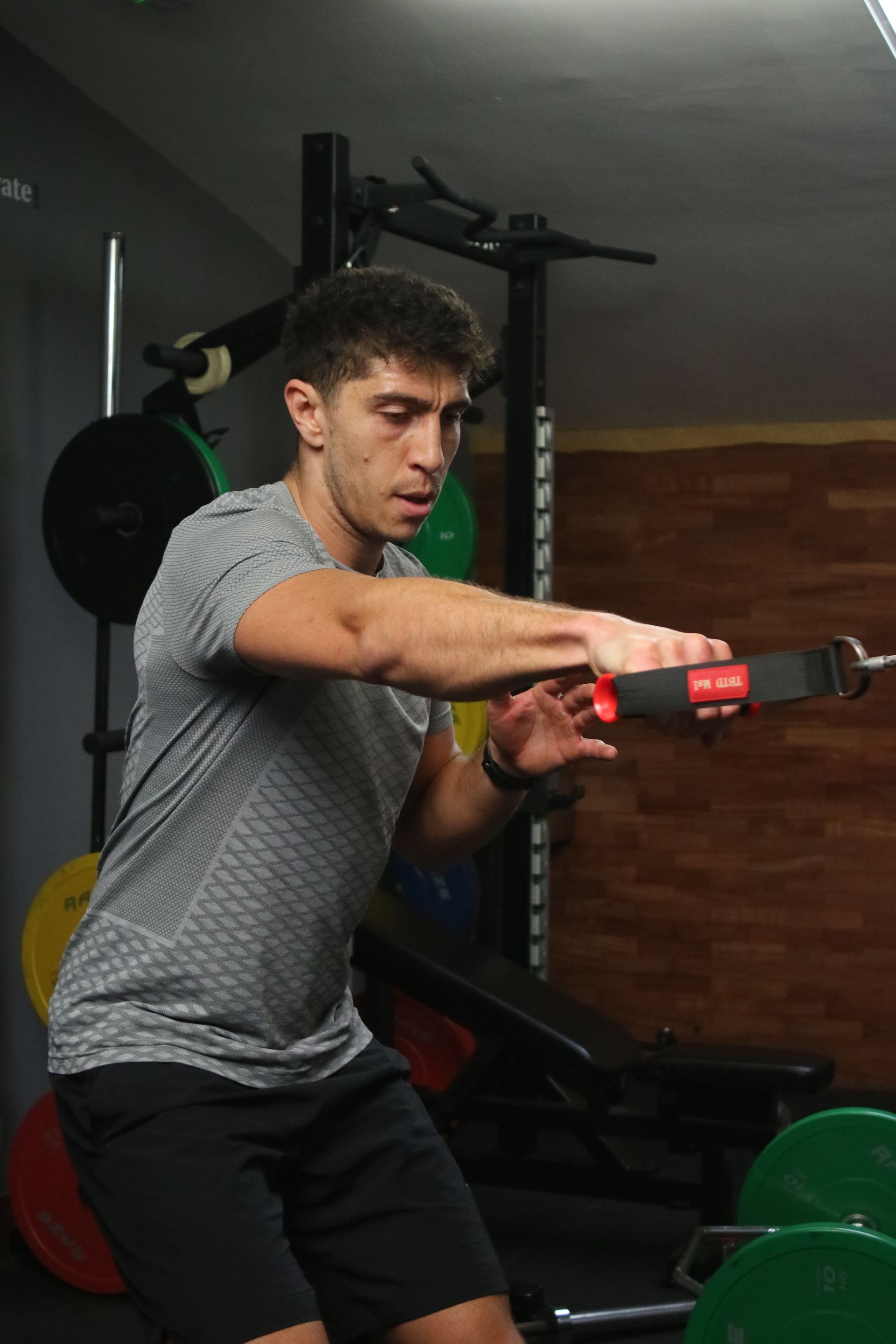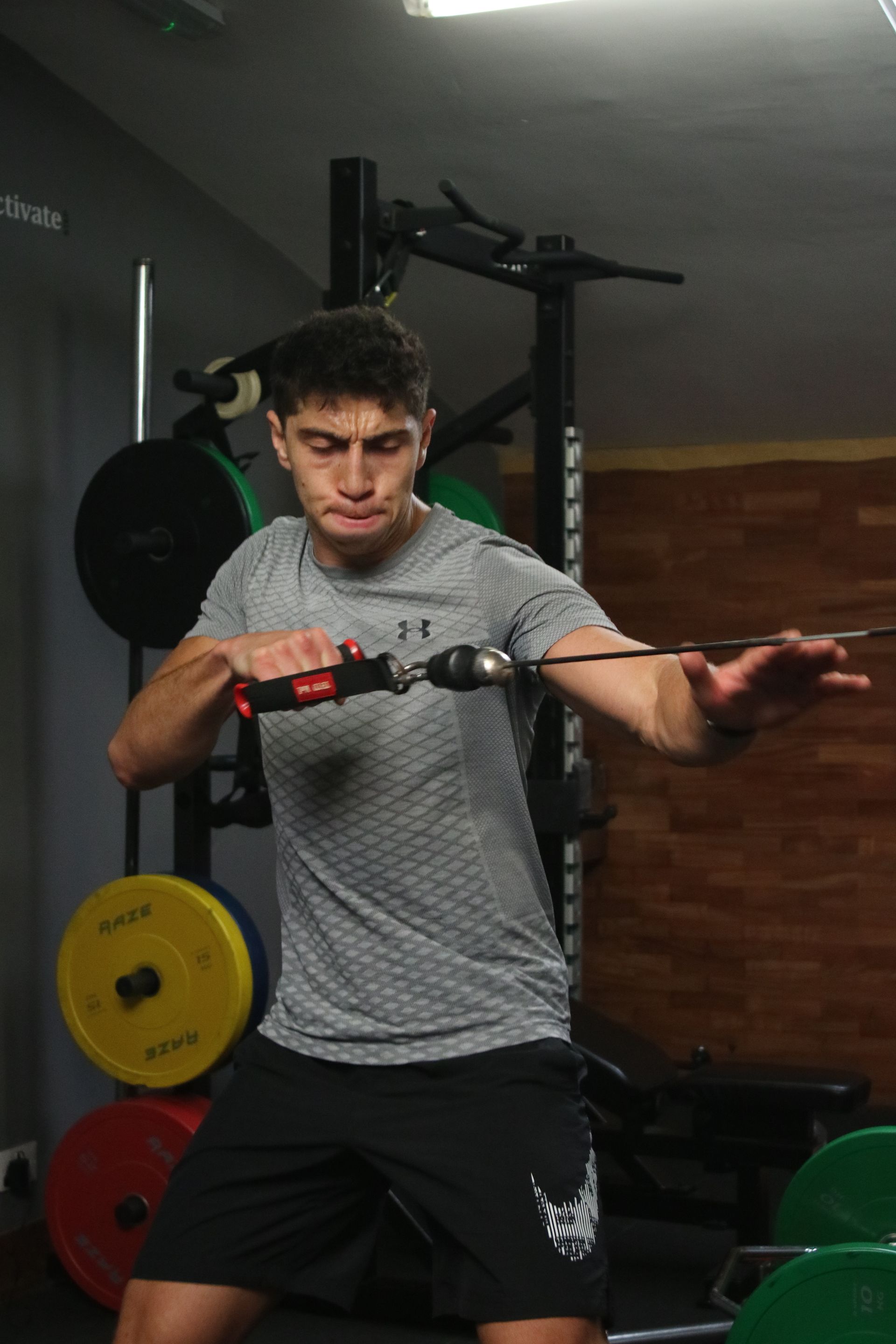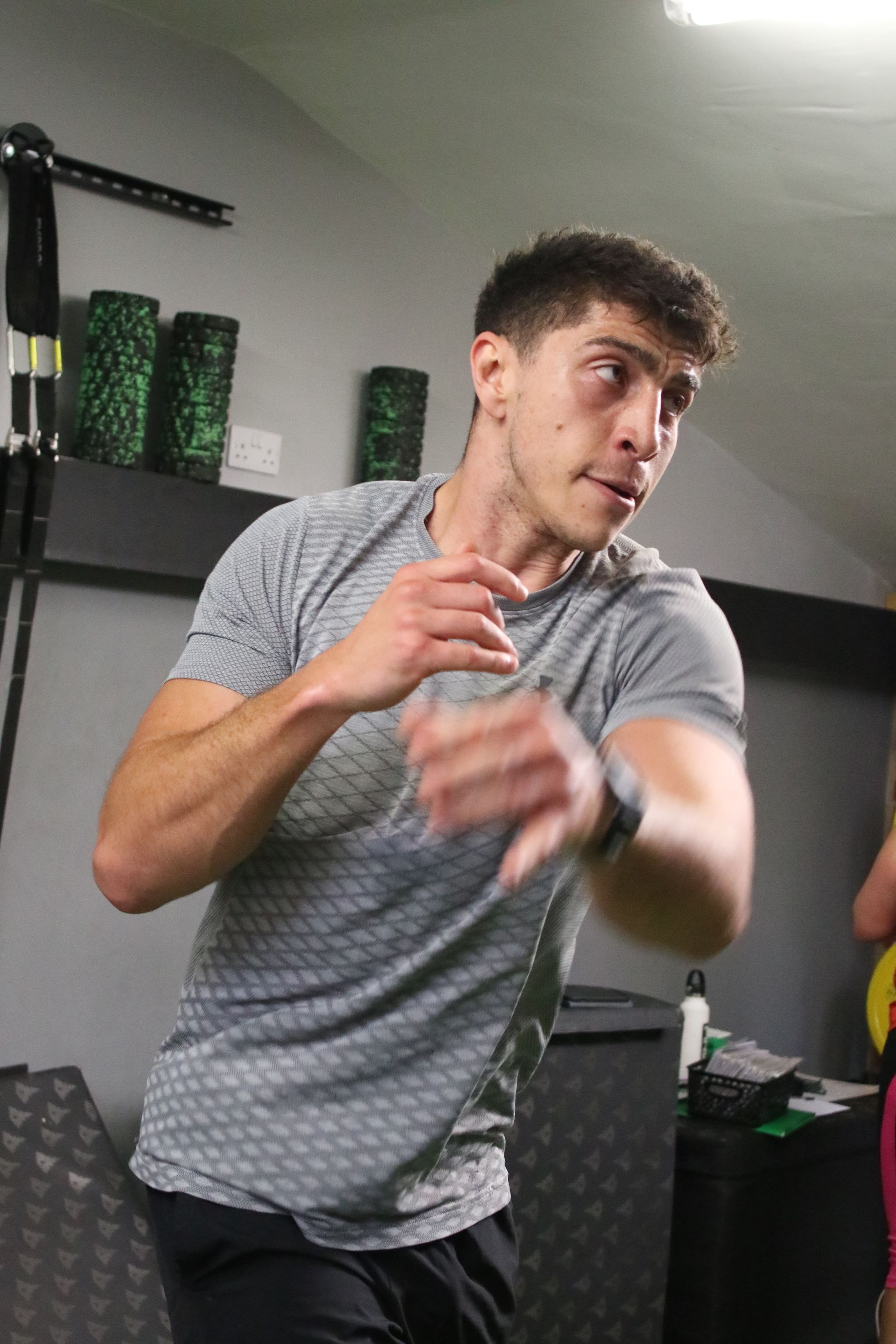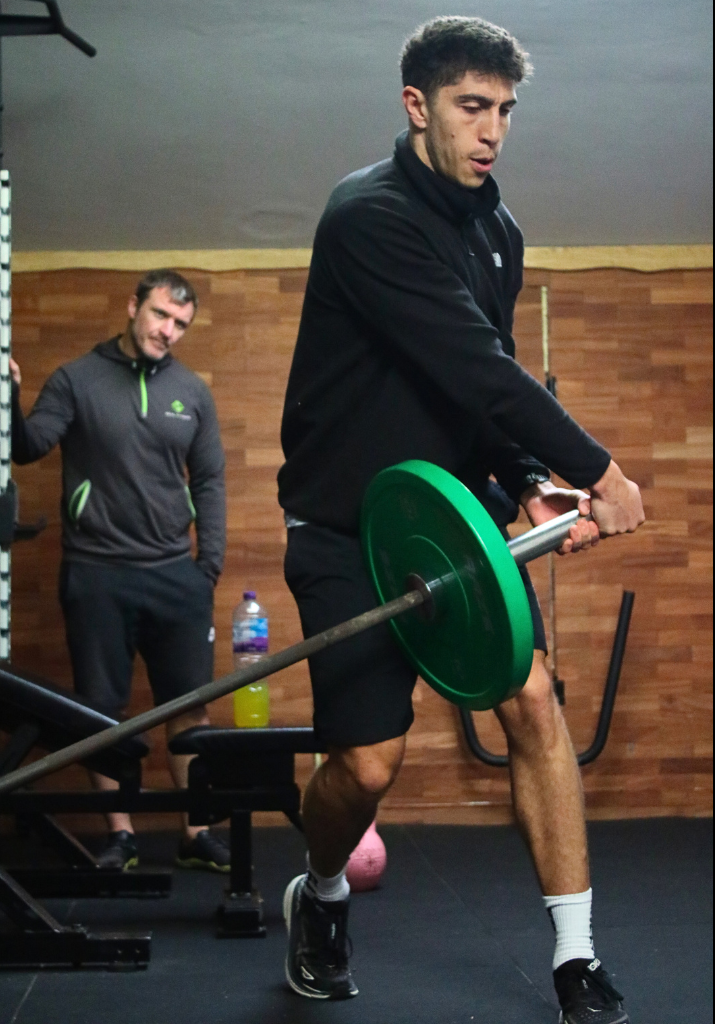BOXING & COMBAT SPORTS TRAINING
Lewis Williams’ Journey with Real Fitness
Since 2017, Real Fitness has been a key part of Lewis Williams' journey. When we were first introduced, Lewis was already a highly regarded junior boxer. Shortly after, he was selected for Team GB, and we remained his home gym, providing ongoing support throughout his development. During this time, Lewis achieved a major milestone, winning Commonwealth Gold in Birmingham in 2022.
Now, having turned professional in 2024, Lewis has already secured two impressive professional wins and is ready to conquer the heavyweight boxing division. With his dedication and our expert coaching,
the best is yet to come.
CONDITIONING TRAINING
The Longest potential duration for a Professional fight is 47 mins, with 36 mins of active. This Would Suggest that Boxing is an endurance sport. However, the statistic below highlights the importance of sustained high-intensity activity in combat sports.
In MMA, 77% of contests are won by 8 to 12 seconds of prior high-intensity activity. This has also been shown to extend to 20 seconds. This indicates a need for development of anaerobic pathways and the ability to be able repeatedly produce bouts of high force.
The 2nd fundamental To high level conditioning in Boxing and Combat sports is the ‘energy tank’ The tank Refers to aerobic capacity, a fighter with a larger aerobic capacity is able to produce more aerobic energy and therefore greater performance intensity.
One of the goals of Conditioning is to make that energy tank as big as possible.
(Credit Boxing Science)
Boxer and Combat athletes typically will Typically Compete in the ‘Red zone’
The Red Zone is the highest of intensity zone, at typically 90% plus Max heart rate.
Well-designed Conditioning Programs can replicate the Physiological demands of this dominant zone, without the punishing demands of sparring and favourable physical adaptation congruent with improved boxing performance.
(Credit Boxing Science)
Our comprehensive fitness assessment at the beginning of the program details your current training level and enables us to write a individual, appropriate, structured Conditioning program. We Revisit testing periodically to assess improvements and monitor the success of the program.
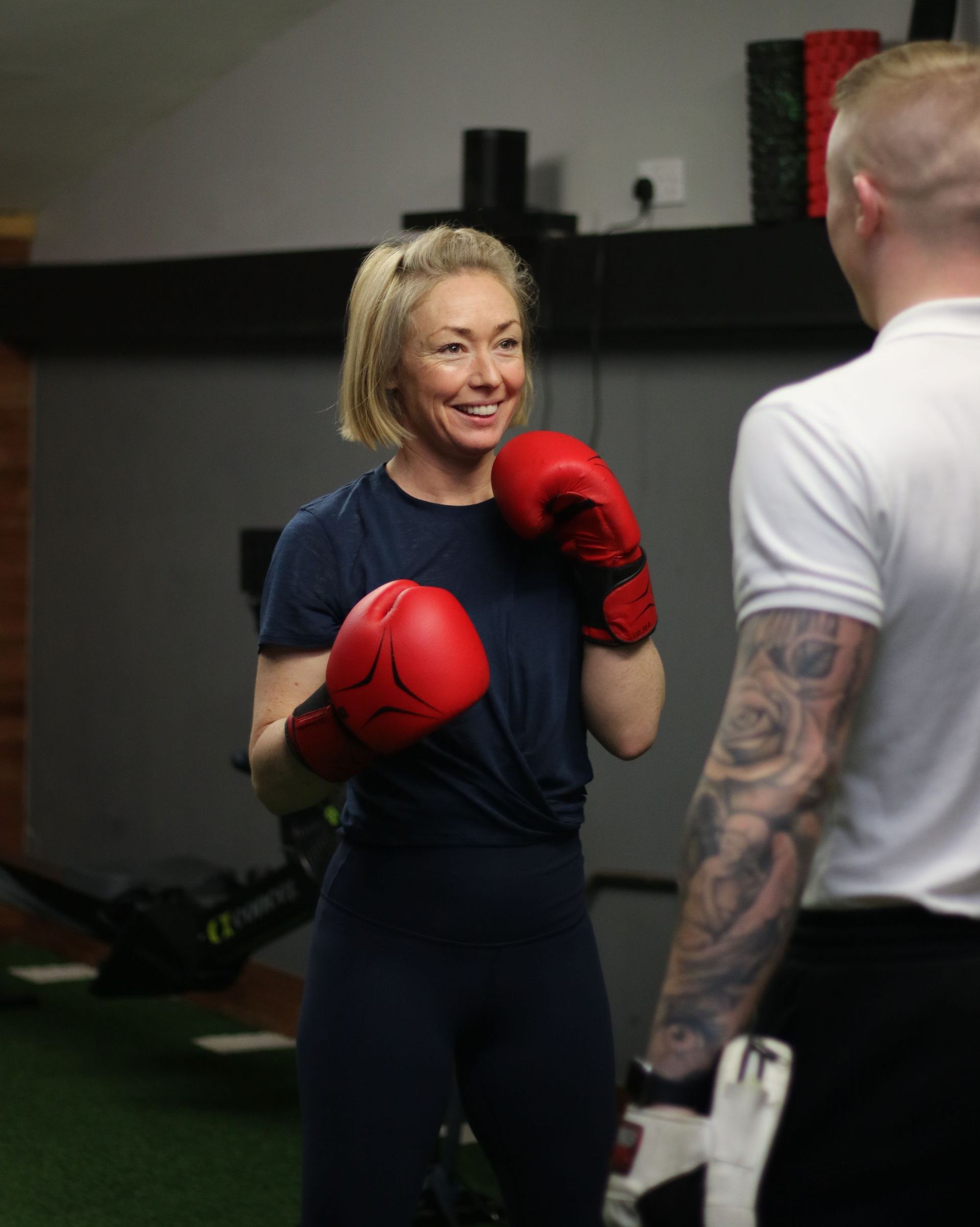
Heavy Strength Training
Weights make you slow is a has been a common objection from both athletes and coaches. There is certainly some truth to this, if an athlete only trains heavy and slow then that will be there likely outcome. And in A weight-class sensitive Sport, Strength Training prescriptions must be well managed, as making weight is paramount.
A successful punch is delivered very quickly, sometimes lest than 200ms.
This is a very quick and explosive action.
Our Training Methods Surf the entirety of the force/velocity curve at different times of an athlete’s development to ensure all qualities are trained appropriately and at the correct time of a fight camp schedule. This Approach Bridges the gap between Maximum strength training and the ability to produce and apply force quickly. Loaded throw and plyometric training are great tools for this.
What do we know about force production and boxing performance?
•Jump height and trunk mass have a strong relationship how far a boxer can throw a 3kg medicine ball. (Simulated punch.)
•Trunk Mass relative to body weight is also a significant predictor of punch specific performance.
How does a successful punch work?
Force is applied through the foot and the floor through the entire connectic chain (ankle,knee,hip,core,shoulder/arm,to the hand delivering the punch. As mentioned in the movement section. Common muscle imbalance can disrupt the connectic chain causing energy leaks and potential injury risk.
•Increasing Max strength increases the RFD (rate of force development) which is a key factor in a forceful punch
•Jump higher/punch harder (plyometric training)
•Stronger Core=harder punch
As mentioned, Lean mass of the core demonstrates a strong relationship to simulated Punch throw. Due to the increased rotational force increase by a strategic, periodised core training program.
(Credit Boxing Science)
•Improved Eccentric utilisation. (The loading of a punch)
Poor eccentric utilisation has been shown to in boxers, this is demonstrated by negligible difference in Squat jump and Counter Movement jump in testing.
This can be developed by a well-designed Strengthening program, in conjunction with appropriate plyometric methods, leading to improved lower body impulse and improved punching action.
Increased SNAP (stiffness on impact)
•A final PEAK in force on impact requires rapid whole body isometric tension. (stiffing) This can be optimised by Utilising punch specific exercises like isometrics or specific strength training concepts like accommodating resistance.
(Credit Boxing Science)
Our comprehensive Power and Strength assessment at the beginning of the program details your current training level and enables us to write a individual, appropriate, structured Strength & Power program. We Revisit testing periodically to assess improvements and monitor the success of the program
Movement and Mobility Training
Due to High training loads, asymmetrical bias and repetitive nature of boxing and other combat sports. Athletes can develop commonly ‘tight or over active muscles and as a result ‘weak or under-active synergists. These in balances between muscle groups can contribute to a reduction in performance, force production and increase fatigue and in the worst case pre-dispose you to injury.
Boxers and other combat athletes can typically throw 500-1000 strikes per session, with a 1 to 3/4 ratio between Right and left depending on Orthodox or southpaw. typically for a closed guard, asymmetrical stance. This Can lead to dominance of the anterior chain or front side of the body and imbalance Left to right. This can be compounded by high running loads and stiffness through the ankle complex in conditioning sessions.
(Credit Boxing Science)
Also As strength & conditioning support is in its infancy in boxing and other combat sports. Lack of exposure to Mobility based training in junior athletes may cause amplified movement impairment and imbalance.
Research Has indicated Boxers Have; Reduced Hip Mobility and weak Glutes, Reduced Core stability and Overactivity of the Lower back muscles. Overactive (tightness) in the anterior (front shoulder) and weakness in the posterior shoulder complex. Reduced ankle mobility and Unilateral (Left to Right) discrepancy in Strength and Mobility.
We look to address the problematic areas in the Mobility Warm up segment of our program.
This focuses on; Rotational Mobility, hip Mobility, Shoulder Mobility/Stability and Glute Complex Strength
(Credit Boxing Science)
We identify These issues through and comprehensive Mobility Assessment at the beginning of the program and Revisit periodically to assess improvements and change in movement behaviour.

